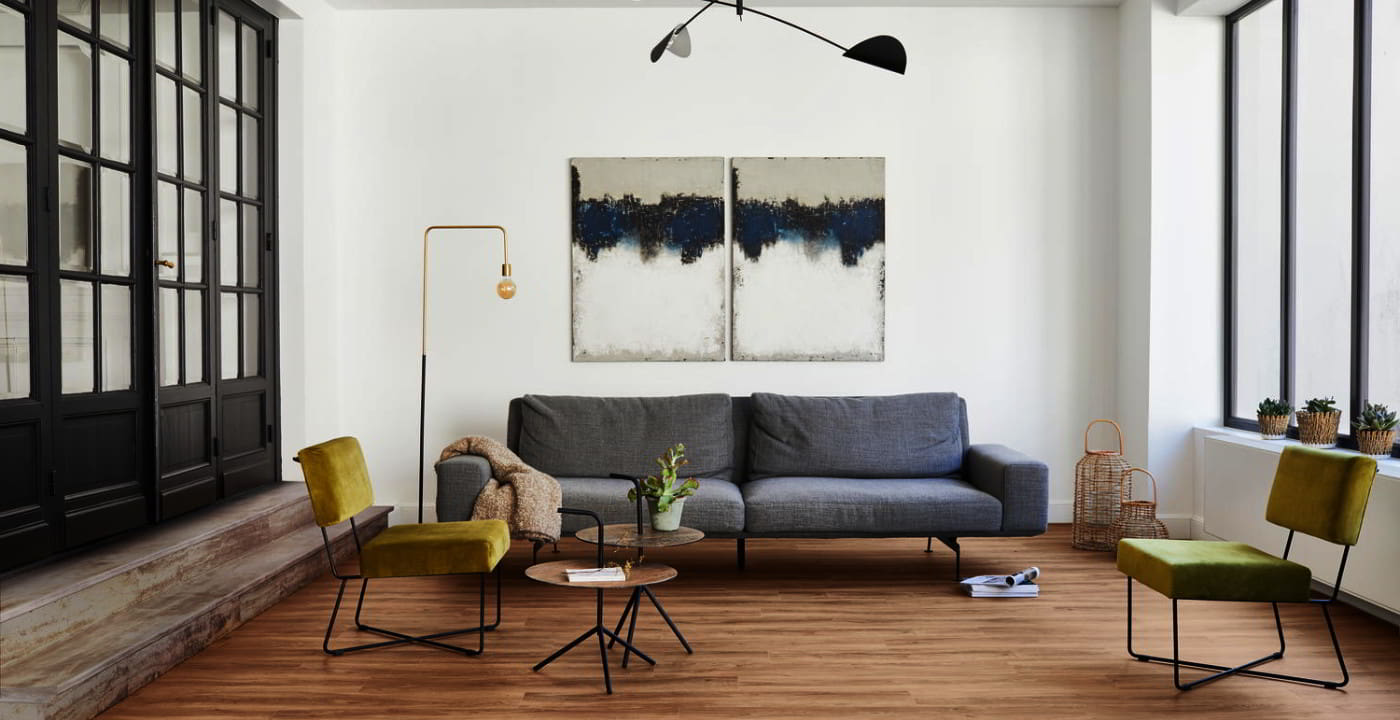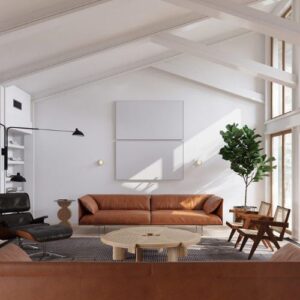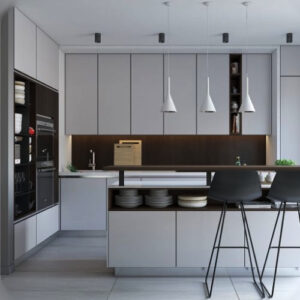In recent years, minimalistic decor has taken the interior design world by storm. With its clean lines, simplicity, and focus on functionality, minimalism has become a popular choice for individuals seeking a clutter-free and serene living environment. Read on to find more about its history and why this trend continues to boom.
Key Summary
- Minimalistic decor, which emerged in the mid-20th century, has experienced a surge in popularity due to its appeal in embracing simplicity, promoting well-being, and prioritising sustainability.
- Reasons for the current boom in minimalistic decor include the shift towards a movement lifestyle and the rise of minimalist house design.
- Stay up to date with minimalism trends via resources such as blogs, social media, and online communities.
Why is Minimalism So Popular?
Minimalism has gained widespread popularity for its ability to enhance lives by simplifying and decluttering both physical spaces and mental landscapes. This lifestyle choice allows individuals to embrace a more fulfilling existence, unencumbered by the excesses of material possessions.
Thanks to the explosion of the internet, social media and bloggers have also played a huge role in promoting the benefits of minimalism.
Minimalism offers an escape route from the constant bombardment of information and consumerism that comes with the modern world, allowing people to focus on what truly matters and creating a joyful, freeing space.
The minimalist philosophy encourages a shift towards mindful consumption, emphasising quality over quantity and experiences over possessions. This way of life allows people to have a more intentional and meaningful lifestyle.
The Origins of Minimalism
Minimalism as an artistic movement emerged in the mid-20th century, originating in the fields of visual arts, architecture, and design. It was a response to the excesses of previous styles and sought to strip away unnecessary elements, leaving only the essential.
Minimalist artists such as Donald Judd, Dan Flavin, and Agnes Martin pioneered this aesthetic by creating works characterised by clean lines, geometric shapes, and a focus on materiality.
Over time, minimalism transcended the realm of art and design to become a lifestyle choice embraced by many, with the movement gaining momentum in the late 20th century.
Today, it continues to influence various aspects of contemporary living with its core philosophy revolving around living for less, finding joy in essentials, and embracing simplicity.
Minimalism: A Timeline
1960s – 1970s- The minimalist movement emerges in art, architecture, and design as a response to the excesses of previous styles. Artists, such as Judd, embrace simplicity, clean lines, and geometric shapes in their works.
1980s- Minimalism gains popularity in interior design, with a focus on open spaces, neutral colour palettes, and streamlined furniture.
1990s- Minimalism continues to evolve, with a shift towards incorporating natural materials, such as wood and stone, to create a warm and organic minimalist aesthetic. Japanese design concepts, like Zen minimalism, become influential.
Early 2000s- The rise of technology and digital minimalism becomes prominent. Sleek and minimalist electronic devices, such as smartphones and tablets, gain popularity, influencing both product design and interior aesthetics.
2010s- Minimalism experiences a resurgence, driven by the desire for decluttered spaces and a simpler lifestyle. Scandinavian design, known for its minimalist approach, gains widespread recognition for its functional yet stylish aesthetic.
Present Day- Minimalistic decor remains a dominant trend, with a focus on sustainability and mindful consumption.
The Appeal of Minimalism
1. Embracing Simplicity
In today’s fast-paced world, many individuals seek solace in simplicity. Minimalism offers a way to declutter both physical spaces and mental clutter, promoting a sense of calm and balance.
2. Increased Focus on Well-being
Minimalistic decor promotes a sense of serenity and tranquillity, allowing individuals to create a peaceful sanctuary within their homes. This focus on well-being aligns with the growing interest in mindfulness and self-care.
3. Environmental Consciousness
With growing concerns about the environmental impact of consumerism, minimalism presents a sustainable alternative. By owning fewer possessions and making mindful purchasing decisions, individuals can reduce waste and minimise their carbon footprint.
4. Enhanced Functionality
Minimalist design prioritises functionality, ensuring that each item serves a purpose. This emphasis on practicality makes living spaces more efficient and organised.
1. Shift Towards a Movement Lifestyle
As people become more conscious of their overall well-being, there has been a notable shift towards a minimalist lifestyle.
This lifestyle encompasses not only interior design choices but also extends to wardrobe simplification, digital decluttering, and mindful consumption.
The movement lifestyle reflects a desire for a more intentional and meaningful way of living, free from the burden of excessive possessions.
2. Famous Minimalist Interior Designers
The influence of renowned minimalist interior designers cannot be understated in the current popularity of minimalistic decor.
Designers, such as John Pawson and Axel Vervoordt, have showcased their exceptional talent for creating serene and elegant spaces that embody minimalist principles. Their work has inspired countless individuals to adopt minimalistic design concepts in their own homes.
3. The Rise of Minimalist House Design
The increasing cost of living and limited living spaces in urban areas have fuelled the rise of minimalist house design. Compact yet functional dwellings, with an emphasis on smart storage and multi-purpose furniture, have become a necessity for many individuals, leading to a greater appreciation for minimalist approaches.
4. The Allure of the Minimalist Aesthetic
The minimalist aesthetic’s timeless appeal lies in its simplicity and elegance. The use of neutral colour palettes, natural materials, and uncluttered spaces creates an atmosphere of tranquillity and sophistication. This visually appealing aesthetic resonates with individuals seeking a refined and harmonious living environment.
Staying Up to Date with Minimalism Trends
To stay up to date with minimalist trends and embrace the evolving world of minimalistic decor, there are various avenues you can explore, including:
1. Online Design Communities and Forums
Engage with online communities and forums dedicated to interior design and minimalism. These platforms offer a wealth of information, the latest trends, discussions, and insights from fellow enthusiasts and professionals.
2. Social Media Platforms
Follow influential designers, bloggers, and interior stylists on platforms like Instagram and Pinterest. These visual-centric platforms provide a constant stream of minimalist design inspiration, showcasing trends, new products, and creative ideas.
3. Design Publications and Magazines
Subscribe to design publications and magazines that cover the world of interior design. These publications often feature articles and editorials focused on minimalist decor, providing valuable insights into emerging trends, designer profiles, and stylish minimalist spaces.
4. Visit Showrooms and Exhibitions
Attend design exhibitions, trade shows, and showroom visits to see firsthand the latest minimalist designs and products. These events offer an immersive experience where you can interact with designers, explore new collections, and gain a deeper understanding of the evolving minimalist trends.
5. Collaborate with Interior Designers
Engaging the services of a professional interior designer who specialises in minimalistic decor can be a valuable investment. They can guide you through the design process, offer personalised recommendations, and help you stay ahead of trends while creating a space that reflects your unique style.
6. Design Blogs
Follow popular design blogs that focus on minimalistic decor. These blogs often share practical tips, DIY projects, and design inspiration for creating minimalist spaces. Mini Home Decor, for example, offers a diverse range of articles that cover topics like minimalist colour schemes, furniture selection, and space optimization where you can then shop the look directly from the site.
Summary
Minimalistic decor has evolved from an artistic movement to a lifestyle choice embraced by many. Its appeal lies in its simplicity, focus on well-being, environmental consciousness, and enhanced functionality. As the minimalist trend continues to boom, keep on top of the latest trend with the wide range of resources available to ensure your decor choices are in keeping with the latest styles.





